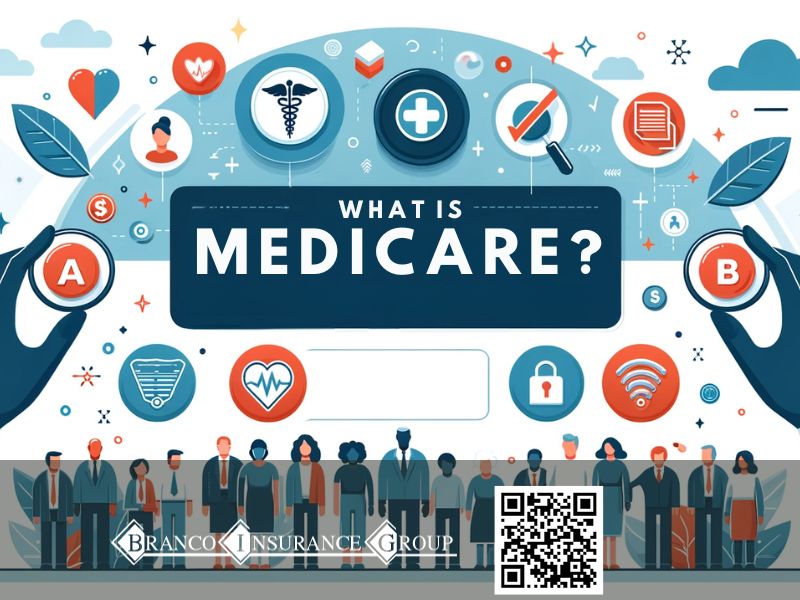Medicare is a federal health insurance program that provides health care coverage to millions of Americans aged 65 and older, as well as some younger individuals with qualifying disabilities. Established in 1965 with the passage of Title XVIII of the Social Security Act, the program is administered by the Centers for Medicare & Medicaid Services (CMS) and has remained a crucial pillar of the American healthcare system for over 50 years.
But what exactly does Medicare cover, who qualifies for enrollment, and what are the costs? This comprehensive guide examines all aspects of Medicare to help you understand this vital program.
A Brief History of Medicare
On July 30, 1965, President Lyndon B. Johnson traveled to Independence, Missouri to sign the bill establishing Medicare alongside former President Harry S. Truman, who received one of the first Medicare cards. This moment culminated years of political debate stretching back to Truman himself, who had tried and failed to enact public health insurance for the elderly during his presidency two decades prior.
The Medicare concept traces back even further to social insurance proposals in the Progressive Era of the early 20th century. By the 1940s and 1950s, private health insurance was growing rapidly, but coverage remained out of reach for many older Americans. Insurance companies charged prohibitively high rates to those over 65, deeming them too great an actuarial risk.
When Johnson signed the Social Security Amendments of 1965, which contained the Medicare legislation, he completed this long arc toward securing affordable health coverage for seniors. Over the subsequent decades, Congress enacted further changes that expanded Medicare eligibility and benefits. Landmark legislation like the Affordable Care Act of 2010 enabled key expansions to the scope of services covered.
Today, from its humble beginnings over a half-century ago, Medicare now insures over 60 million beneficiaries and constitutes one of the largest payers within the sprawling American healthcare system.
Key Takeaways About Medicare
In review, these main points provide essential knowledge for understanding Medicare:
- National health insurance program administered by the federal Centers for Medicare & Medicaid Services furnishing coverage to over 60 million Americans
- Standardized benefit structure consisting of Part A, Part B, Part C Medicare Advantage plans, and Part D prescription drug coverage
- Eligibility for most begins automatically at age 65 with fewer than 10 years of work history allowing premium-free access
- Various costs like premiums, deductibles, and coinsurance apply depending on specific parts of Medicare
- Trust fund financing relies on payroll taxes, enrollee premium contributions, and general federal revenues
- Medicare spending projections fuel calls for reforms addressing long-term solvency issues driven by the aging population
- Ongoing policy conversations also center on topics like expanding benefits lacking coverage plus curbing fraud and waste
As America’s largest public insurance program, Medicare supports fundamental promises enabling aging citizens to access affordable medical care. While complex in detail, grasping Medicare’s origins, eligibility rules, and financing models constitutes foundational knowledge for an informed society. This guidance on common Medicare questions aids literacy on a system impacting the well-being of so many.
Overview of Medicare Coverage
Medicare is publicly administered, meaning coverage is standardized across the country without variation between states. The program is structured with different parts that help pay for specific health services seniors commonly need.
Table 1: Medicare Part A & B Premiums and Cost-Sharing Details
Benefit | Part A | Part B |
Monthly Premium | $0 for most people | $164.90 (standard in 2023) |
Late Enrollment Penalty | 10% for each full 12-month period you delayed Part B | |
Income Adjusted Monthly Premium | | Yes, through IRMAA surcharges |
Yearly Deductible | $1,600 (for benefit periods in 2023) | $226 (in 2023) |
Inpatient Hospital Copays | $0 for the first 60 days then $400/day for days 61-90 | |
Skilled Nursing Facility Coinsurance | $0 for the first 20 days then $200/day for days 21-100 | |
Coinsurance | | Usually, 20% of the Medicare-approved amount |
Medicare Part A – Hospital Insurance
Part A helps cover medically necessary inpatient hospitalizations along with skilled nursing facilities, home health, and hospice care. Specifically, after meeting a deductible of $1,600 in 2023, Part A pays 100% of costs for the first 60 days spent admitted to a hospital. For stays lasting longer than 60 days, daily copayments apply.
Part A also covers up to 100 days in a skilled nursing facility (SNF) per benefit period. A benefit period begins the day you enter a hospital or SNF and ends when you have not received care as an inpatient at either type of facility for 60 consecutive days.
Medicare Part B – Medical Insurance
Complementing Part A’s coverage of institutional care settings, Part B covers medically necessary doctor visits and other outpatient services. These encompass preventive care, ambulance transportation, lab work, and medical equipment. In 2023, the standard monthly premium for Part B is $164.90. Following the yearly $225 deductible, enrollees typically pay 20% of costs as coinsurance for Part B services.
Medicare Part C – Medicare Advantage
As an alternative to traditional fee-for-service (FFS) Medicare under Parts A and B, Part C Medicare Advantage plans allow enrollees to receive coverage via private insurance companies contracted with Medicare. These plans must offer the same benefits furnished under Parts A and B but can also provide additional coverage like vision, hearing, and dental care.
Medicare Part D – Prescription Drug Coverage
The newest component of Medicare, Part D offers insurance to help manage medication costs. First made available in 2006, enrollees can choose standalone prescription drug plans (PDPs) in tandem with Parts A and B or Medicare Advantage plans that integrate drug coverage. Either option entitles access to negotiated pricing for covered brand name and generic drugs at participating pharmacies.
Who Qualifies for Medicare?
U.S. citizens and permanent residents become eligible for Medicare coverage at age 65 automatically if they or their spouse worked for at least 10 years and paid Medicare payroll taxes in that time. People under 65 can also qualify if they receive Social Security Disability Insurance (SSDI) payments or have End-Stage Renal Disease (ESRD) requiring dialysis treatment.
Certain individuals may also enroll if they contracted Lou Gehrig’s Disease or have undergone a kidney transplant. Others with amyotrophic lateral sclerosis (ALS) have no waiting period for coverage.
When and How to Apply for Medicare
Upon turning 65, the seven-month initial enrollment period (IEP) provides the first opportunity to sign up spanning three months before your birth month to three months after. Failing to enroll during the IEP when initially eligible can lead to lifelong late enrollment penalties and delays in coverage taking effect.
If you already receive Social Security benefits, enrollment into Medicare Parts A and B happens automatically at age 65 (provided you don’t have qualifying coverage from current employment). Others must proactively file applications, typically by contacting the Social Security Administration. Those with disabilities or ESRD should similarly notify Social Security to enroll.
Medicare Enrollment Periods
Enrollment continues on set schedules even after the initial signup window closes:
- General Enrollment Period: Every year from January 1 – March 31, allowing enrollment in Medicare Parts A or B effective July 1.
- Open Enrollment Period: Every year from October 15 – December 7 for comparing and switching Medicare Advantage and Part D drug plans effective January 1.
Special Enrollment Periods also exist accommodating certain life events allowing chances to sign up outside standard time frames.
How Much Does Medicare Cost?
Different components of Medicare entail varying cost-sharing responsibilities:
Part A Costs
Eligibility for premium-free Part A requires you or your spouse to have at least 10 years of Medicare payroll tax payments from working. With fewer than 30 quarters of payments, the monthly premium is $506 in 2023 and $505 in 2024. Between 30 to 39 quarters worked, the premium drops to $278.
If admitted to a hospital, Part A imposes deductibles and daily copayments after covering the first 60 days entirely. Receiving SNF care incurs copays beyond 20 days.
Part B Premiums
The standard monthly Part B premium in 2023 is $164.90 for most enrollees, increasing to $174.70 in 2024. High earners pay more based on income through a surcharge known as IRMAA. Married couples filing jointly earning over $194,000 and individuals over $142,000 trigger additional costs.
Following the $225 yearly deductible, Part B services typically entail 20% coinsurance.
Part C and Part D Plan Premiums
Private Medicare Advantage and Part D drug plans charge monthly premiums that vary based on the particular insurer and level of coverage chosen. Part C plans with prescription drug coverage have premiums incorporating both components.
Out-of-Pocket Spending
Despite covering many vital medical services, gaps exist in Original Medicare lacking an annual limit on enrollees’ out-of-pocket costs. Supplemental coverage like Medigap policies or retiree plans helps handle expenses not paid for by Parts A and B. Most Part C Medicare Advantage offerings include yearly caps on enrollee costs for in-network services.
How Medicare Pays Providers
As one of the largest healthcare payers nationwide, Medicare employs different models to reimburse hospitals, physicians, and other providers:
- Prospective Payment Systems: Medicare dispenses fixed pre-set payments to hospitals for admission based on the patient’s diagnosis rather than actual services furnished. Skilled nursing facilities also receive per diem bundled reimbursement adjusted based on required care.
- Fee Schedule for Physicians: Doctors bill for each individual service rendered, but Medicare only reimburses up to an allowed charge it pre-determines. Many providers accept “Medicare assignments” agreeing to these approved payment rates.
Newer value-based payment arrangements aim to improve care quality and control costs through tactics like paying based on achieving health outcome benchmarks.
Medicare Spending and Financing
The program’s two main trust funds covering Parts A and B totaled income exceeding $1 trillion in 2022. This money comes from multiple sources:
- Payroll taxes and taxation of Social Security benefits
- Enrollee premiums, deductibles, and coinsurance payments
- Transfers from general federal revenue
In recent years, experts project expenses to grow quicker than revenues, indicating Medicare faces long-range funding issues largely stemming from the aging population and rising healthcare costs.
Various reform proposals tackle this fiscal challenge. Strategies like raising the age of eligibility, introducing income-based premium subsidies, and modifying benefits aim to bolster the program’s financial viability for coming generations.
Critical Medicare Policy Issues
Table 2: Projected Medicare Financing Shortfalls
Year | Payroll Tax Contributions | Part A Trust Fund Solvency | Financing Shortfall |
2028 | Insufficient to cover 98% of costs | Insolvent | 25% funding gap |
2040 | Covers less than 80% of needs | | 45% deficit |
2050 | Still the largest financing source but greatly diminished | | Over 60% |
Aside from safeguarding solvency, Medicare navigates several other crucial policy matters including:
- Closing coverage gaps: Dental, vision, and hearing care represent frequently cited holes lacking coverage under original Medicare parts A and B.
- Cost and quality transparency: Collecting standardized data on outcomes and resource use across providers could enable delivery system reforms to improve efficiency.
- Program integrity and fraud reduction: Estimates indicate improper Medicare payments total nearly $50 billion yearly necessitating enhanced oversight of claims and billing.
- Interoperability and digitization: Facilitating seamless health data exchange and adopting technologies like telemedicine may improve convenience and appropriate utilization.
- Advancing health equity: Evidence reveals disparities in healthcare access and medical outcomes disproportionately affecting marginalized enrollees.
As the baby boomer generation continues aging into Medicare eligibility, expert projections forecast enrollment to expand to over 80 million by 2030. Therefore, the policy decisions rendered today on both fiscal and healthcare delivery matters will profoundly shape the program’s capacity to meet the requirements of tomorrow’s beneficiaries.
Table 3: Current and Future Enrollment Demographics
Year | Over 85 Years Old | Multiple Chronic Conditions | Living With Disability |
2016 | 12% | 25% | 15% under age 65 |
2030 | Projected 18% | Over 30% | Near 20% under age 65 |
Final Thoughts
At Branco Insurance Group, our goal is to provide you and your family or business with quality insurance coverage and unmatched service. As an independent agency working with various top-rated carriers, we have the flexibility to offer you tailored solutions for your unique needs.
Whether you need to protect your home, auto, valuables, or business assets, our experienced agents take the time to understand your specific situation. We don’t simply look to “make the sale.” Our consultative approach aims to educate you on your options so that you can make informed decisions.
With over a decade of experience in the Connecticut insurance market, our team leverages our expertise to configure optimal coverage while maximizing value. We stay on top of the latest offerings to ensure your customized insurance plan fits both your budget and risk profile.
At the end of the day, Branco Insurance Group strives to provide our clients peace of mind knowing they have the proper safeguards in place. We make the process of securing coverage simple and convenient. Contact us today to have an agent review your current policies or discuss new ones – we’re here as your trusted local resource.





